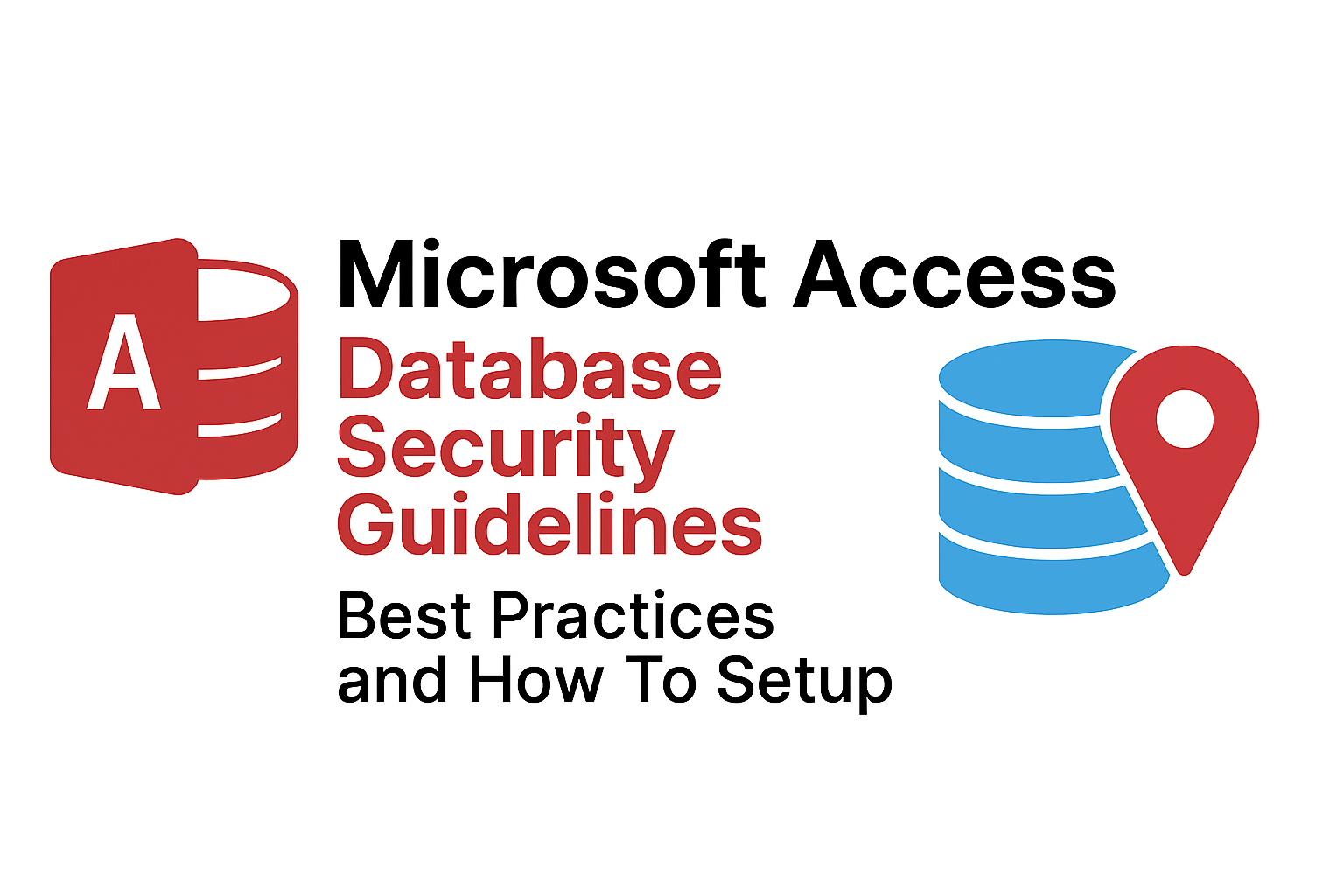Microsoft Access Database Security Guidelines
Protecting your Microsoft Access database is critical for ensuring data integrity, maintaining compliance, and preventing unauthorized access. Whether in single-user or multi-user environments, following best practices for security can reduce risks and improve reliability.

Split Your Database
Always split Access databases into a back-end (tables and data) and a front-end (forms, queries, reports). The back-end should be stored on a secure network location to restrict direct access, while the front-end is distributed to individual users with limited modification permissions.
Use Strong Passwords
Set strong, unique passwords for your Access database, especially when deploying in shared environments. Avoid default or simple passwords, and change them periodically.
Implement User-Level Security
For multi-user databases, assign users roles and permissions that match their responsibilities. Limit write access to sensitive tables, and use read-only access wherever possible. Consider integrating Access with Active Directory for centralized authentication.
Encrypt Your Database
Use Access’s built-in encryption to protect data at rest. Encryption prevents unauthorized users from opening the database without a password and ensures stored data remains secure.
Control Front-End Distribution
Ensure users only receive front-end copies, not the back-end. Limit modifications to queries and forms by standardizing the front-end, and provide updates only when necessary to prevent accidental corruption or security breaches.
6. Restrict Access to Network Locations
Store the back-end database on a secure network share with restricted folder permissions. Only authorized users should have read/write access, preventing unauthorized access or accidental deletions.
Backup Regularly
Frequent backups protect against data loss or corruption. Maintain multiple backup versions, and store copies offsite or in cloud storage for disaster recovery scenarios.
Minimize Sensitive Data Storage
Store sensitive information, such as financial data or personally identifiable information, only when necessary. Mask or encrypt sensitive fields to reduce exposure in case of unauthorized access.
Use Trusted Locations
Access allows you to designate trusted locations for databases. Store your database in these locations to ensure macros and VBA code run safely, avoiding warnings and reducing security risks.
Regularly Monitor Database Activity
Keep logs of user activity, including data modifications and logins. Monitoring helps detect unusual behavior, potential security breaches, and performance issues before they escalate.
Implement Error Handling and Validation
Use VBA error handling and field validation to prevent unauthorized or incorrect data entry. Proper validation improves data integrity and reduces the likelihood of accidental data corruption.
Educate Users on Security Practices
Train users on proper database usage, password management, and secure login procedures. Well-informed users help maintain database security and prevent common mistakes that compromise data integrity.
